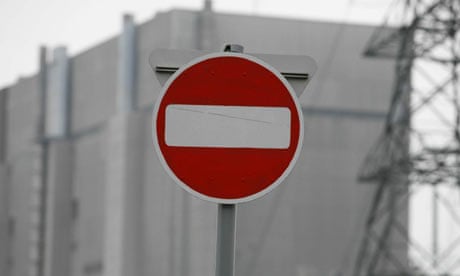As a mining giant prepares to open a major uranium mining site in Western Australia next year, the clamour for the state to once more ban mining of the radioactive mineral has become louder.
In fact, the Wongatha Aboriginal clan that calls this region its home does not see any wisdom in having uranium mining in Australia at all. "We don't need uranium mining in this country," says Wongatha leader and pastor Geoffrey Stokes. "We have sun, we've got wind, we've got people. Why should we pollute our country for money?"
The World Nuclear Association says that Australia has the largest uranium reserves in world, with 23 percent of the global total. And while it has only three uranium mines so far, it has been exporting as much as 10,000 tonnes of uranium oxide a year.
In the last two years, says the association, the annual value of Australia's uranium exports reached more than one billion Australian dollars (about 892 million U.S. dollars). Its major clients include the United States, Japan, and South Korea, which use the uranium to generate nuclear power.
Western Australia is said to have a significant share of the country's uranium reserves, but between 2002 and 2008, a state-wide ban on uranium mining was in force. The ban was lifted two years ago, when the Liberal Party was voted into power in the state.
Today, the Anti Nuclear Alliance of Western Australia says, more than 100 domestic and foreign companies are exploring for uranium all over Western Australia.
One of the industry's major players, the Australian mining company BHP Billiton, already plans to develop the Yeelirrie uranium deposit here in 2011 in a 17 billion Australian dollar (15.6 U.S. billion dollar) project. The mine is set to operate in 2014, with an annual yield of 3,500 tonnes of uranium ore.
Kalgoorlie-Boulder itself is in what is called the 'Goldfields' region of Western Australia. The town of 30,000 exists purely around the mining industry. But many residents of Kalgoorie, some 600 kilometres east of the state capital, Perth, would rather not have anything to do with uranium.
Even Kade Muir, a Wongatha anthropologist who was born in Kalgoorlie but now resides elsewhere, says, "We don't want this product disturbed from the ground. We don't want to bequeath a legacy for future generations of a toxic environment."
Such sentiments are echoed by the Labor Party, which had imposed a policy restricting uranium mining to just three locations in Australia at any one time when it led the federal government in the eighties.
Shadow Environment Minister Sally Talbot told protesters at an anti- uranium mining rally here in March: "We know that all mining is dangerous, but we know that mining uranium is off the scale. It presents an unacceptable hazard for workers in the industry, it presents an unacceptable risk to the future and well-being of our indigenous communities, and it presents a dreadful threat to our environment in Western Australia."
For decades, uranium mining has been a touchy subject for Aboriginal people. Hundreds of Aboriginal communities were cleared out into cattle stations, towns and cities in the fifties and sixties, when Australian and British governments tested atomic weapons in the South Australian desert and off the coast of Western Australia.
That left many Aboriginal people with serious health problems such as cancer and unexplainable illnesses.
A 1997 Australian parliament report describes the devastating impact of uranium mining. It points to the Rum Jungle mine in the Northern Territory, where acid mine drainage into the Finnis River "destroyed all plant and animal life for a 10-kilometre stretch of the river".
The report observes: '(The) history of uranium mining in Australia and its impact on Aboriginal people is deplorable. Past mining in places like Rum Jungle have left areas so degraded that traditional owners are unable to use them, while mines such as Ranger (also in the Northern Territory) have been forced on traditional owners against their will." "Even at mines such as Olympic Dam," it adds, "...there was deep concern at the reckless degradation of sacred sites and insensitivity to their culture."
The BHP-owned Olympic Dam uranium mine in South Australia already draws 30 million litres of water every day from the Great Artesian Basin, an ancient underground water source, says the Australian Conservation Foundation. There are no known plans for the management of its radioactive tailings dump of 60 million tonnes.
Monash University professor and engineer Gavin Mudd notes that no uranium mine in the world has ever successfully been rehabilitated. And while Australia has made sure that the uranium it exports is not used for the manufacture of nuclear weapons, Mudd says the proliferation of these weapons, along with the legacy of radioactive waste, should be reason enough for anyone to stay away from uranium mining.
Not all indigenous groups have rejected uranium mining, however. The Martu, for example, have made in known that they are open to it in their 130,000-square kilometre land here in Western Australia. The Western Desert Lands Aboriginal Corp, representing the Martu, has signed uranium exploration agreements in the area with at least two companies.
Indigenous groups are usually paid royalties, the amounts of which depend on location, type and scale of mine, for mining operations on their land. Yet for the Wongatha apparently, whatever BHP Billiton may offer may simply be inadequate for the risks they would be taking.

Comments (…)
Sign in or create your Guardian account to join the discussion